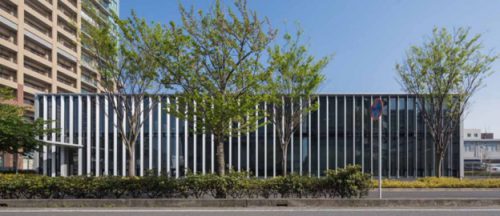
The office building used as Takenaka’s Higashi Kanto Branch Office (completed in 2003) was renovated into a net-zero energy building while it was being used as an office building. Because buildings are rebuilt only once every several decades, improving energy efficiency in existing buildings is particularly important. The renovated building went into full operation in May 2016, and its first year as a net-zero energy building ended in April 2017. As a result, annual generative energy exceeded annual energy consumption achieving a net positive annual energy balance.
The renovation of our Higashi Kanto Branch Office was the first project in Japan in which an office building was renovated into a net-zero energy building while the building remained in use. The project involved replacing the exterior materials with high-performance heat insulation materials, leveraging passive energy technology to harness natural energy, utilizing carefully designed environmental control technology and reforming the work style. Annual energy consumption resulting from these efforts was 403 MJ/m2∙year, more than a 70% reduction from the pre-renovation level. Solar power generation further increased annual generative energy to 417 MJ/m2∙year. The one-year operation confirmed the following effects:
- Boosting the overall heat insulation efficiency of the building significantly reduces exterior loads and makes it possible to keep the indoor environment comfortable throughout the year by reducing temperature changes even in window zones.
- By maximizing the use of natural lighting and automatically controlling the opening and closing of the external blinds, it is possible to maintain a sense of brightness in the room and significantly reduce the amount of electricity used for lighting.
- A newly developed compact desiccant air-conditioning system and radiant air-conditioning system that directly harness geothermal and solar energy make it possible to significantly reduce energy used for air-conditioning while keeping indoor spaces comfortable.
- Personal preferences can be learned by measuring user activity through wearable devices and sensation questionnaire surveys in order to enable wellness control for optimizing temperature and airflow conditions.
- Because dependence on external energy sources is minimized, the building can stay operational for a longer time—even if the public infrastructure goes down—so that the business continuity plan can be dramatically improved.
Savings Narrative:
Annual energy consumption was 403 MJ/m2∙year, more than a 70% reduction from the pre-renovation level. Solar power generation further increased annual generative energy to 417 MJ/m2∙year.